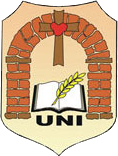Línea de investigación: Valoración económica del ambiente
Autor: Felipe Rafael Mitjans Amarilla
E – mail: felipe.mitjans@gmail.com
Tutor: Dr. Victorio Oxilia
Resumen
El trabajo de investigación se centra en la temática del Modelo de Análisis Institucional, cuyo objetivo fue explicar el Modelo de Análisis Institucional de Barreras para la Obtención de Certificados de Emisiones Reducidas (en adelante CER’S): Desarrollo y Aplicación a un Caso en Paraguay. Metodológicamente, se trata de un trabajo con enfoque mixto, de Diseño Secuencial, de Tipo Exploratorio Secuencial (DEXPLOS). El instrumento de recolección de datos consistió en una entrevista. La muestra seleccionada totalizaba a participantes de 3 Proyectos que lograron certificar, los cuales fueron tomados intencionalmente, y cuyos certificados fueran vendidos en el mercado de carbono. Entre los resultados más relevantes se constata que la comprensión del Protocolo y sus actualizaciones es tarea muy compleja, ya que son documentos que utilizan un lenguaje técnico basado en la comprensión jurídica internacional. Sus reglas no siempre son objetivas y, en algunos puntos, se caracterizan por la ausencia de una definición clara y sin ambigüedades. Se ha logrado elaborar un modelo para superar las barreras institucionales y con ello poder certificar proyectos de energías renovables elaborados en Paraguay y colocar los certificados en el mercado de carbono para su venta. Se constata, además, que a pesar de los intereses ambientales y financieros están a la vanguardia de los objetivos de las empresas al implementar un proyecto, el MDL es una herramienta que permite la extrapolación de los beneficios a los modelos sociales y varios otros existentes que podrían ser utilizados. Se concluye que en los países en vías de desarrollo es más difícil la certificación a través de MDL, por las barreras institucionales detectadas en la tesis.
Palabras clave: Mecanismo de Desarrollo Limpio. Nueva Economía Institucional.
Análisis Institucional y Desarrollo. Certificaciones de Emisiones Reducidas.
Abstract
The research work focuses on the theme of the Institutional Analysis Model, whose objective was to explain the Institutional Barriers Analysis Model for Obtaining the Reduced Emissions Certificates (hereinafter CER’s): Development and Application to a Case in Paraguay. Methodologically, it is a work with a mixed approach, of Sequential Design, of Sequential Exploratory Type (DEXPLOS). The data collection instrument consisted of an interview. The selected sample totaled participants of three Projects that managed to certify, which were taken intentionally, and whose certificates were sold in the carbon market. Among the most relevant results, it is that the comprehension of the Protocol is a very complex task, since they are documents that use a technical language based on international legal understanding. Its rules are not always objective and, in some points, are characterized by the absence of a clear and unambiguous definition. It has been possible to develop a model to overcome institutional barriers and thereby be able to certify renewable energy projects developed in Paraguay and place such certficates in the carbon market for sale. It is also noted that, despite environmental and financial interests are at the forefront of the objectives of companies to implement a project, the CDM is a tool that allows the extrapolation of the benefits to social models and several other existing that could be used. It is concluded that in the developing countries certification through CDM is more difficult due to the institutional barriers detected in the thesis.
Keywords: Clean Development Mechanism. New Institutional Economy. Institutional Analysis and Development. Certificatio
